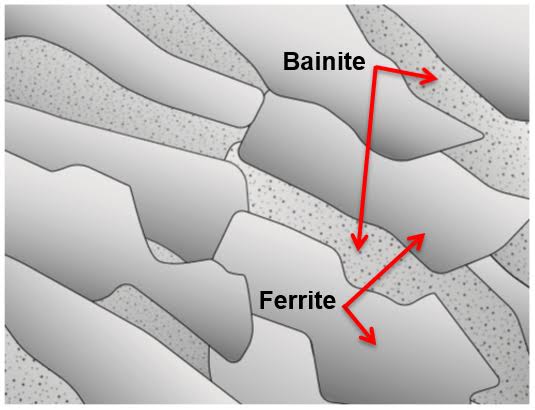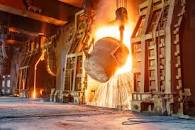Steel Making: Understanding the Role of Ferrite
Discover the secrets of steel making and the significance of ferrite. Learn how ferrite contributes to steel’s ductility, toughness, and magnetic properties. Explore FAQs about ferrite in steel
Introduction with Meta TechX Engineers:
Discover the secrets of steel making and the significance of ferrite. Learn how ferrite contributes to steel’s ductility, toughness, and magnetic properties. Explore FAQs about ferrite in steel.
In the world of metallurgy, steel making is a process that combines art and science to create one of the most versatile and durable materials known to man. But have you ever wondered what makes steel so unique? The answer lies in its composition, and more specifically, the presence of different phases within its structure. One such phase is ferrite. In this article, we will delve into the depths of steel making and explore the significance of ferrite in the creation of this remarkable alloy.
What is Ferrite in Steel?
Ferrite, often depicted as alpha-iron (α-Fe), is a crystalline phase that forms at relatively high temperatures during the solidification process of steel. It is a solid solution of iron with a small concentration of carbon, typically less than 0.02%. Ferrite is known for its body-centered cubic (BCC) crystal structure, which provides steel with its excellent softness, ductility, and magnetic properties.
How does Ferrite Formation Occur?
During the initial stages of steel making, the molten metal undergoes controlled cooling and solidifies into a solid matrix. As the temperature decreases, ferrite nuclei start to form within this matrix. These nuclei then grow and develop into larger grains, giving the steel its final microstructure.
The formation of ferrite is influenced by several factors, including the chemical composition of the steel, cooling rate, and alloying elements present. In low alloy steels with carbon content below the eutectoid composition, ferrite is the primary phase that forms. It acts as a foundation upon which other phases, such as pearlite or bainite, can subsequently develop.
The Significance of Ferrite in Steel Making
- Improved Ductility: Ferrite’s BCC crystal structure allows for greater plastic deformation of the steel, making it more ductile. This property is crucial in applications that require the steel to undergo shaping processes such as bending or stretching without fracturing.
- Enhanced Toughness: Ferrite’s soft and ductile nature contributes to the overall toughness of the steel. Toughness refers to the ability of the material to absorb and dissipate energy before fracturing. Steel with a higher ferrite content exhibits excellent resistance to cracking and impact-related failures.
- Magnetic Properties: Ferrite is inherently magnetic due to its crystal structure. This characteristic makes ferritic stainless steels suitable for applications that require magnetic properties, such as in transformers, motors, or magnetic resonance imaging (MRI) machines.
- Corrosion Resistance: In certain grades of stainless steel, the presence of ferrite provides enhanced corrosion resistance. Ferritic stainless steels contain a higher chromium content, which forms a protective chromium oxide layer on the surface, inhibiting corrosion.
FAQs: Unveiling the Mysteries of Ferrite in Steel Making
Q: Is ferrite the only phase in steel?
A: No, ferrite is just one of the many phases that can form in steel. Other common phases include pearlite, martensite, and cementite. The presence of these different phases imparts unique mechanical properties to the steel.
Q: Can the amount of ferrite in steel be controlled?
A: Yes, the amount of ferrite in steel can be controlled through the chemical composition and heat treatment process. By adjusting the cooling rate or alloying elements, manufacturers can tailor the ferrite content to achieve desired properties.
Q: Are there any disadvantages to having a high ferrite content in steel?
A: While ferrite offers many advantages, an excess of ferrite in certain applications can lead to reduced strength and hardness. It is essential to strike a balance between ferrite and other phases to optimize the steel’s mechanical properties.
Conclusion: Harnessing the Power of Ferrite in Steel Making
As we wrap up our exploration of steel making, one cannot undermine the crucial role that ferrite plays in shaping the final properties of this remarkable material. From improved ductility and toughness to specialized magnetic and corrosion-resistant applications, ferrite is truly a game-changer in the world of steel. So next time you come across a sturdy structure or a magnetic device, remember that ferrite, in all its glory, has left its mark on that piece of steel.



